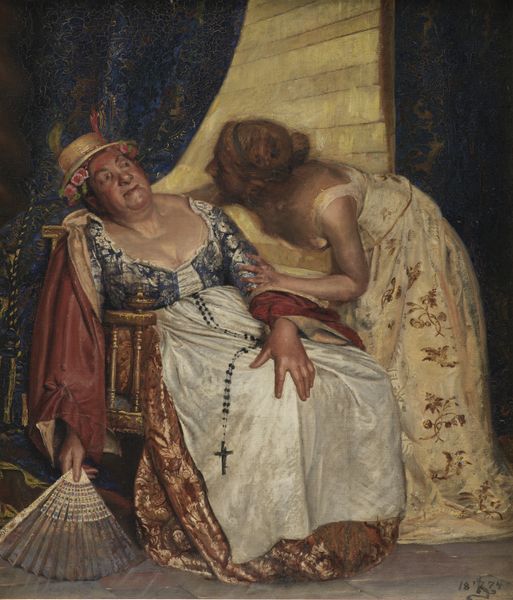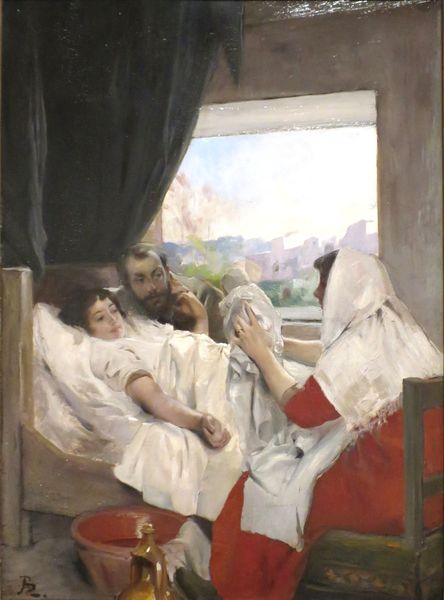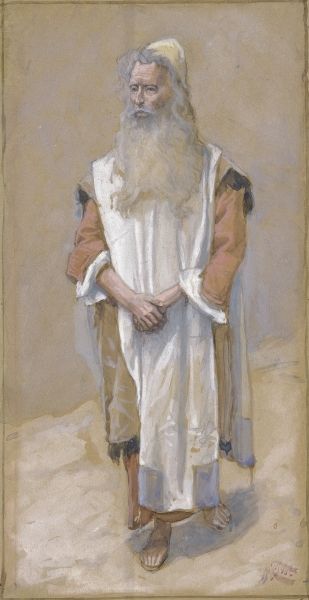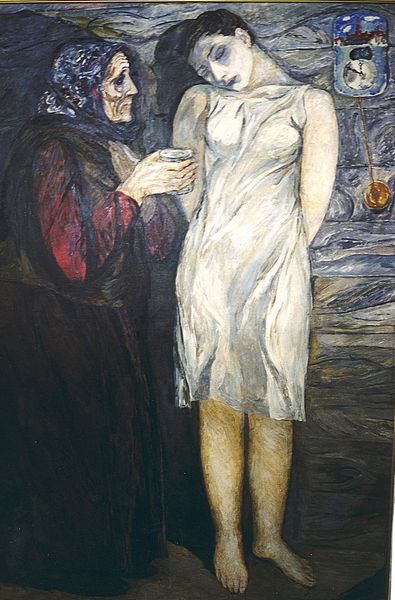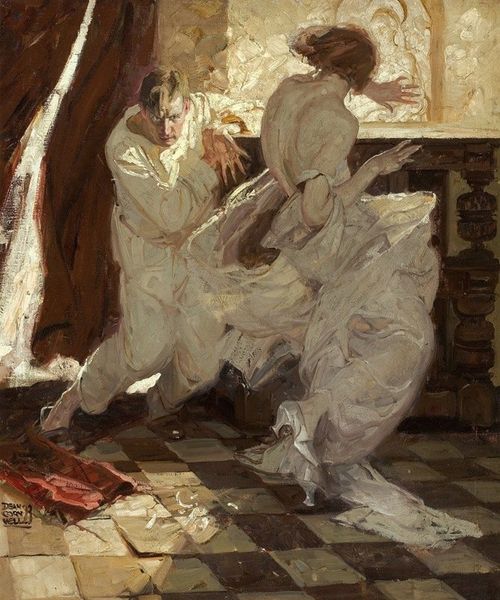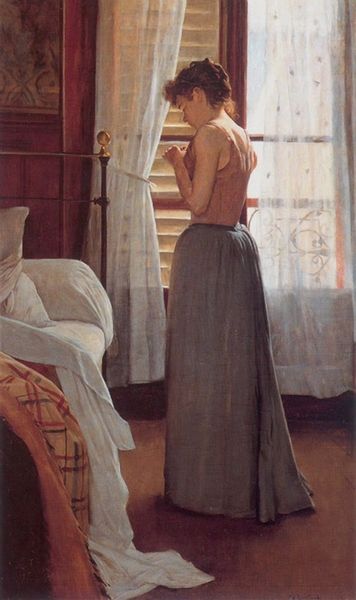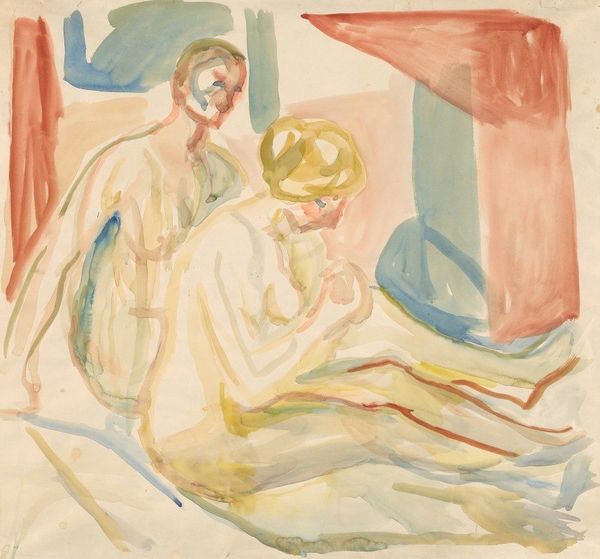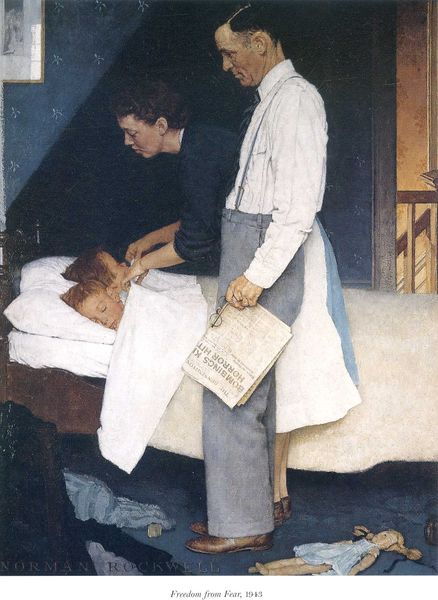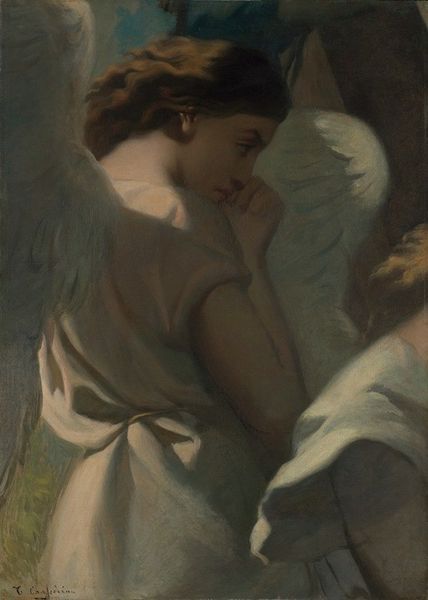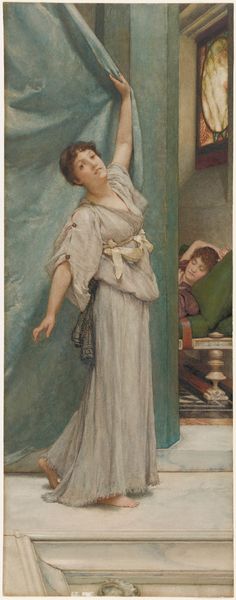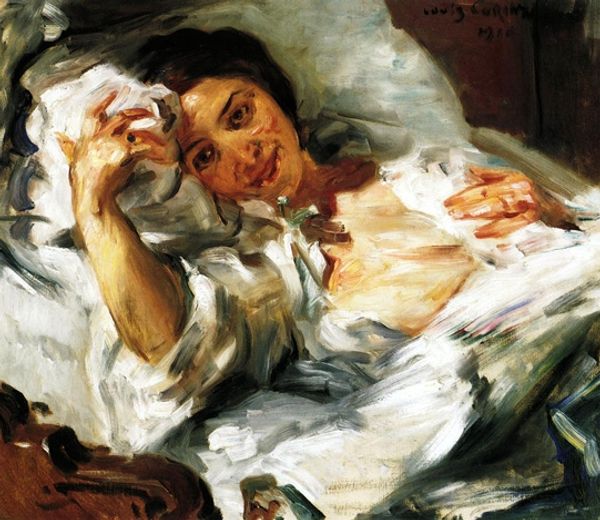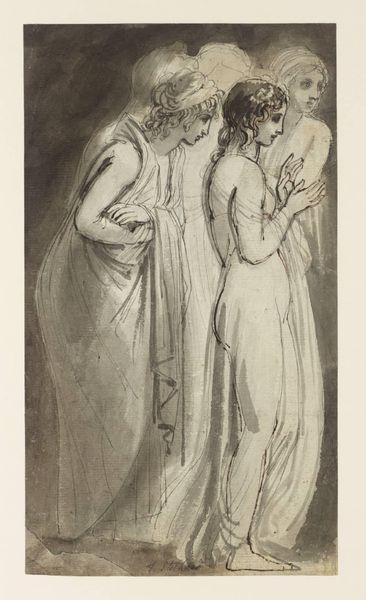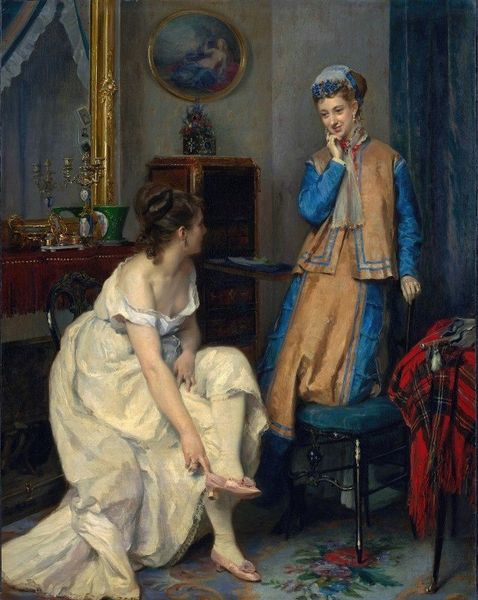
Dimensions: 41.9 x 72.7 cm
Copyright: Public domain
Curator: Ah, "The Annunciation" by Dante Gabriel Rossetti, completed around 1850. It’s currently held at Tate Britain. He used oil paint and tempera. Editor: It's surprisingly... domestic. The light is almost unsettlingly cool, and Mary's expression… she doesn’t seem joyful. Curator: Absolutely. Rossetti subverts the traditional depiction, doesn't he? Mary isn't bathed in divine light, accepting her fate with serenity. She's caught, seemingly, in her bedroom, recoiling. The Pre-Raphaelites aimed for a certain realism, but Rossetti's realism feels deeply psychological. Editor: The whiteness is striking – almost oppressive. The lilies, symbols of purity, seem less a gift and more a… demand? It makes you wonder about the lack of any female agency during the Victorian era and how even sacred narratives were influenced by those societal constraints. Curator: I find the angel's bare feet so striking. It's such a raw, almost vulnerable detail for a figure of divine authority. It really gets to you on a purely human level. And yet, it reminds you of what an avant-garde choice this was in mid-nineteenth century British painting. Editor: The color choices also really reinforce a sense of unease. The harsh red contrasts so starkly with the almost clinical whites and blues, drawing a line to themes of trauma and sacrifice that were deeply ingrained in a time of Victorian moralism. It also makes me question whether that could allude to ideas of the British Monarchy and colonial England at the time. Curator: True, the angel almost seems like he is invading. The gold is even dulled somehow – the gold leaf and halo muted, drained of its usual radiant power. I am surprised at how subversive Rossetti actually makes the artwork feel by turning inside out its spiritual qualities to evoke ideas of resistance to divine expectation. Editor: It definitely provokes a more complicated reading than typical Annunciation scenes. Seeing it today through an activist lens forces you to question representations of female piety. It also explores the complexities of religious experience from perspectives beyond devotional faith. Curator: A beautiful subversion, still provoking and stirring, all these years later! Editor: Yes, this version forces a discomfort with convention, and invites contemplation beyond traditional perspectives.
Comments
No comments
Be the first to comment and join the conversation on the ultimate creative platform.
